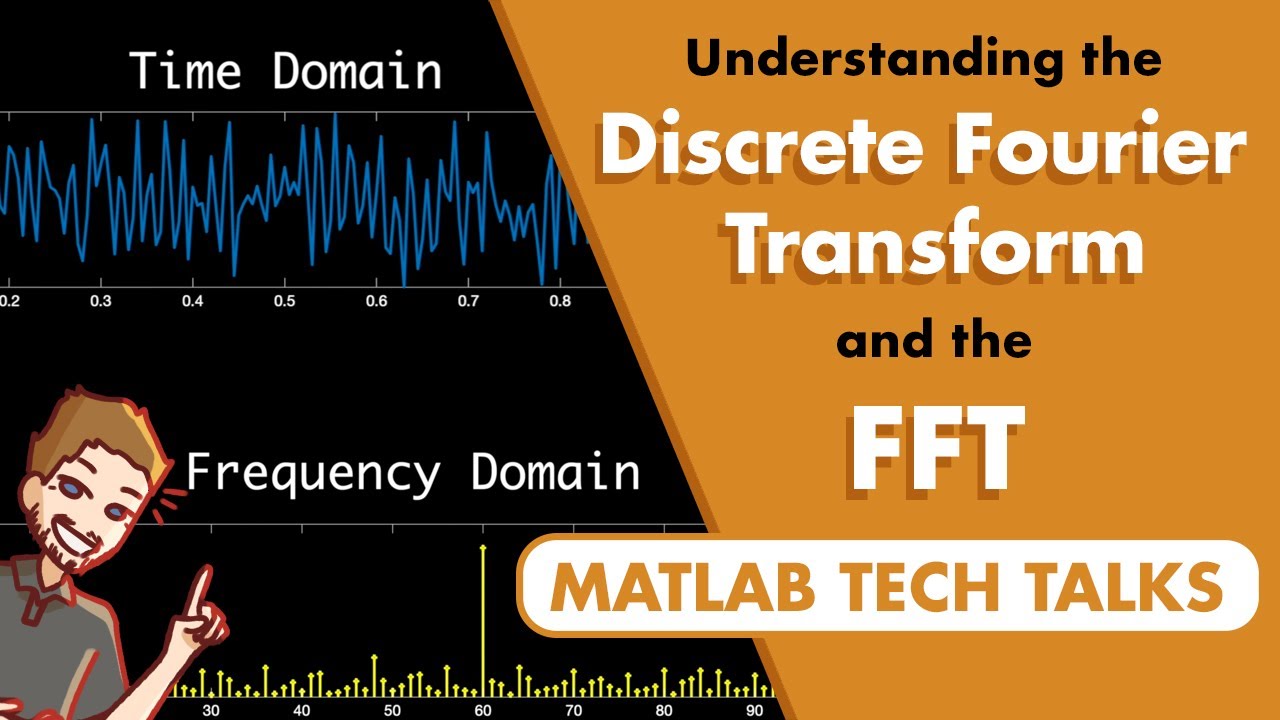The Discrete Fourier Transform (DFT)
Summary
TLDRThis video introduces the Discrete Fourier Transform (DFT), explaining its role in converting discrete data into Fourier coefficients to analyze signals. The speaker clarifies how DFT differs from the continuous Fourier Transform and emphasizes the importance of the Fast Fourier Transform (FFT), a highly efficient algorithm widely used in fields like audio compression, image processing, and scientific computing. The mathematical concepts behind DFT are explored, with the speaker highlighting how it can be written as a matrix multiplication and how FFT enables faster computation of large datasets.
Takeaways
- 🧮 The Discrete Fourier Transform (DFT) is key for computing Fourier series on discrete data.
- 📉 DFT approximates a Fourier series for a finite, periodic interval of data rather than an infinite Fourier transform integral.
- 🖥️ The Fast Fourier Transform (FFT) is a computationally efficient way to compute the DFT, especially for large datasets.
- 🎶 DFT is used to decompose data into sine and cosine components, which is valuable for tasks like signal processing and diagnostics.
- 🔢 Input data for DFT is represented as a vector of discrete values, which may be sampled from continuous functions.
- 📊 DFT transforms this discrete data into Fourier coefficients, revealing the frequencies present in the data.
- 🧩 The transformation process involves a matrix multiplication, where the DFT is defined mathematically using exponential terms.
- 🔄 You can also reconstruct the original data from the Fourier coefficients using an inverse DFT formula.
- ⚙️ The FFT allows efficient computation of the DFT without explicitly performing large matrix operations.
- 🌀 The result of the DFT includes complex numbers, with the magnitude indicating the frequency's strength and the phase indicating its alignment.
Q & A
What is the Discrete Fourier Transform (DFT)?
-The Discrete Fourier Transform (DFT) is a mathematical transformation that approximates a Fourier series on a finite interval where the function is periodic. It allows one to convert data points from the time domain into frequency components, revealing the sine and cosine components that make up the signal.
Why is the name 'Discrete Fourier Transform' considered misleading?
-The name 'Discrete Fourier Transform' is considered misleading because it more accurately represents a Fourier series approximation rather than a true Fourier transform, which involves an integral over infinite intervals. However, due to historical reasons, it is called DFT.
What is the relationship between the DFT and the Fast Fourier Transform (FFT)?
-The FFT is a computationally efficient algorithm to compute the DFT. While the DFT can be calculated through direct matrix multiplication, the FFT reduces the computation time significantly, making it feasible to process large datasets.
What are some applications of the Fast Fourier Transform (FFT)?
-The FFT is widely used in areas such as image compression, audio compression, signal processing, and high-performance scientific computing. It's considered one of the most powerful and important algorithms of the 20th century.
What is the basic idea behind using Fourier series to approximate functions?
-Fourier series approximates a function by breaking it down into a sum of sine and cosine terms. This is particularly useful for periodic functions, where the series captures the frequency components that make up the signal.
How is the DFT applied to experimental or simulation data?
-The DFT is applied to discrete data points obtained from experiments or simulations, assuming an underlying continuous function. The DFT converts these discrete data points into frequency components that describe the signal.
What is the mathematical representation of the DFT?
-The DFT of a dataset is represented as a sum over data points, where each data point is multiplied by a complex exponential term. This sum results in a set of Fourier coefficients, representing different frequency components in the data.
What is the inverse DFT, and how does it work?
-The inverse DFT allows one to reconstruct the original data from its Fourier coefficients. It involves summing over the frequency components, using a similar formula to the DFT but with a positive exponential term and a normalization factor of 1/N.
What is the significance of the complex exponential terms in the DFT?
-The complex exponential terms in the DFT represent the sine and cosine components of different frequencies. They allow the transformation of time-domain data into frequency-domain data by capturing both the magnitude and phase of each frequency component.
How is the DFT represented as a matrix operation?
-The DFT can be written as a matrix operation, where the data vector is multiplied by a matrix of complex exponential terms (DFT matrix) to obtain the Fourier coefficients. This matrix approach simplifies the computation, especially for large datasets.
Why is the FFT preferred over directly computing the DFT?
-The FFT is preferred because it provides a highly efficient way to compute the DFT without constructing and multiplying large matrices. The FFT significantly reduces the computation time, making it practical for real-time applications and large datasets.
Outlines

Esta sección está disponible solo para usuarios con suscripción. Por favor, mejora tu plan para acceder a esta parte.
Mejorar ahoraMindmap

Esta sección está disponible solo para usuarios con suscripción. Por favor, mejora tu plan para acceder a esta parte.
Mejorar ahoraKeywords

Esta sección está disponible solo para usuarios con suscripción. Por favor, mejora tu plan para acceder a esta parte.
Mejorar ahoraHighlights

Esta sección está disponible solo para usuarios con suscripción. Por favor, mejora tu plan para acceder a esta parte.
Mejorar ahoraTranscripts

Esta sección está disponible solo para usuarios con suscripción. Por favor, mejora tu plan para acceder a esta parte.
Mejorar ahoraVer Más Videos Relacionados
5.0 / 5 (0 votes)






